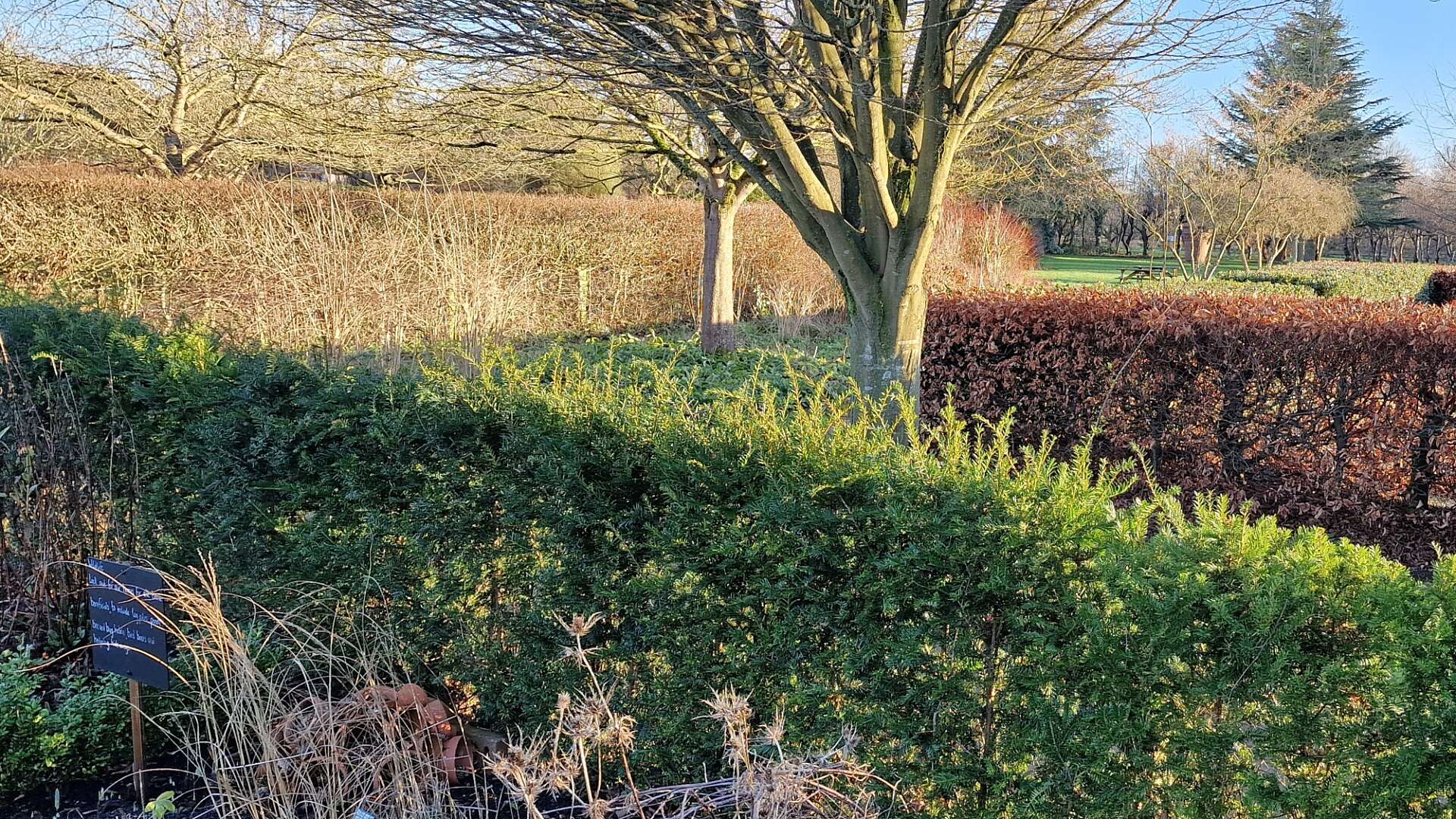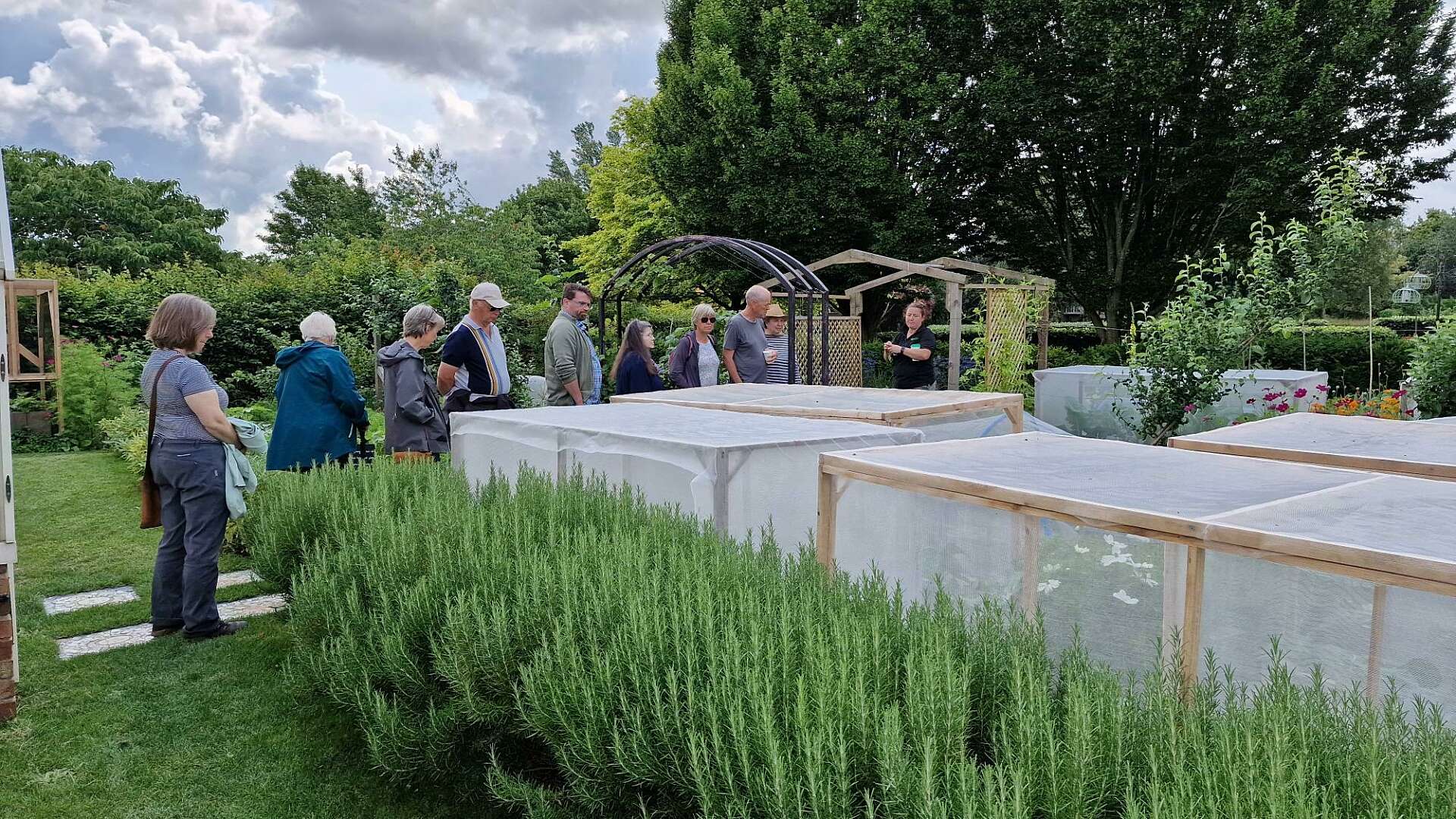Wildlife gardening
Plant a hedge

For the same reasons we like hedges – privacy, shelter and screening from noise/pollution/wind - so to do garden wildlife. Birds, insects and small mammals can hide safely from predators or hibernate and feed and nest in hedges. Plus, hedging plants have the added bonus of offering food sources in the form of flowers and berries, often when other sources are scarce in winter.
Planned carefully, you can provide year-round food for wildlife with a few hedging plants. And unlike many other plants, they offer three-dimensional, vertical and horizontal multi-stemmed habitats.
Best hedgerow plants
Many smaller shrubs and trees, such as dogwood and privet, make quick-growing hedging plants. Native hedges such as hawthorn, beech, hornbeam, cherry plum, bullace, holly, hazel and field maple can be home to hundreds of native species so always try to include these in your mix.
Grow an edible hedge
Living ‘edible’ walls of hazel, crab apple, bullace, cherry-plum, rowan, elderberry and dog rose can allow you to forage as you might on a countryside verge, without setting foot outside your garden. Plus, they’ll provide plenty of berries for birds (and for squirrels, if you have them). You could also try some slightly more exotic but fruitful species such as chokeberry (Aronia), Cornelian cherry, Japanese rose (Rosa rugosa) or medlar.
Step-over fruits that have been horizontally cordon trained can also provide hand-height fruit. And if you have a small garden, you don’t have to grow big. At Garden Organic, our head gardener Emma grows a ‘herb hedge’ (pictured). This small hedge can be created from tightly clipped rosemary, bay or sage, knitted together to form a low-growing boundary that’s fragrant as well as attracting bees and butterflies.

Planting a hedge
The best time to plant large hedging plants is when they’re dormant, from October to March, and when the soil is not waterlogged or frozen.
The easiest place to start is with whips. These are young hedging plants, or single stems that look like twigs/sticks, but which establish quickly.
Dig a trench and mix in some well-rotted compost. Space your hedging plants in a double row, 30cm apart. Spread the roots out and backfill with soil up to the soil mark on the stem. Firm in and water well. Mulch and water in dry summers for the first two years.
Pruning a hedge
Most hedging plants will grow away fairly rapidly in the first few years and just need a little attention to help them bush out. To encourage new growth, if starting from whips, cut them back by a third in the first winter when dormant. Don’t prune in hard frosts, strong winds or snow.
Next summer, clip or pinch back any long straggly shoots by a third after a period of dry weather - about August time - which will help ripen the wood to produce new buds for next year.
Look at the hedge in the winter when leaves are off, and trim back anything which is out of the desired shape. Ideally aim for an A-shaped structure, with the bottom wider than the top. Any diseased, damaged or dead material should be removed too.
By the third year your hedge should be looking thicker, and may need trimming twice a year to keep it in shape for a very formal look. This is especially true of quicker growing species such as privet. Alternatively, a once-yearly haircut creates a looser, country-style appearance.
You’re unlikely to have birds nesting in such a short time after planting, but you'll probably have insects overwintering. Time your cuts for late January to February when any berries will have been eaten and insects may be beginning to stir.
In later years, prune to an A-shape between August to very early March to avoid disturbing nesting birds. Layering, while excellent for keeping out livestock, isn’t ideal for garden boundaries as it means the hedge will need to be quite tall before layering can take place. It then remains very low for some time afterwards.
Join Garden Organic!
By becoming a Garden Organic member you can join thousands of people who are already leading the movement for an organic and sustainable future for us all. And get great member benefits!
Join today